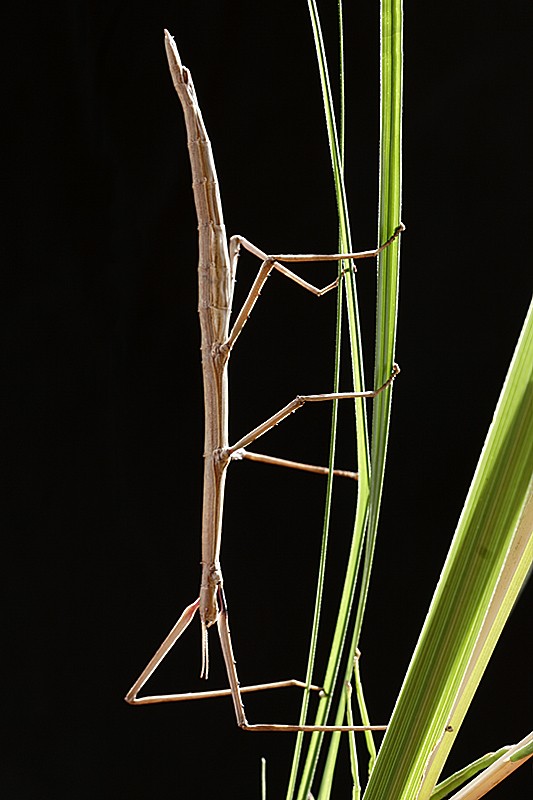European stick insect
(Bacillus rossius)

Description
The European stick insect (Bacillus rossius) also called the European stick bug or the European walking stick and the Mediterranean stick insect is a species of stick insect, common in Europe. The species is endemic to the northwestern Mediterranean, especially Spain, Southern France, Italy and the Balkans. Adults have a slim body, with small antennae and long and thin legs. Colors vary from light green to brown, and female exemplars are greater than male. This species can eat bramble leaves, ivy, and privet. B. rossius can be found from June to mid December and the eggs look like seeds. To tell the difference between a male and female is that females are larger and the males are smaller. Also is that the female has a larger abdomen. An adult can be 10 cm (4 inches) in length. The nymphs hatch out from their seed-like eggs 8 weeks to 2 months after being laid by a female. like the adult, the nymphs sway as in a breeze to avoid predators. B. rossius lives up to a year. The females do not have wings but the male does. They are nocturnal and may stay still for hours and usually feed at night. They shed the exoskeleton a few times in their life. The predators include frogs, birds, bats, salamanders, spiders, rodents, reptiles and ants. Bacillus is a stick insect genus, common in Europe and North Africa.
Taxonomic tree:







